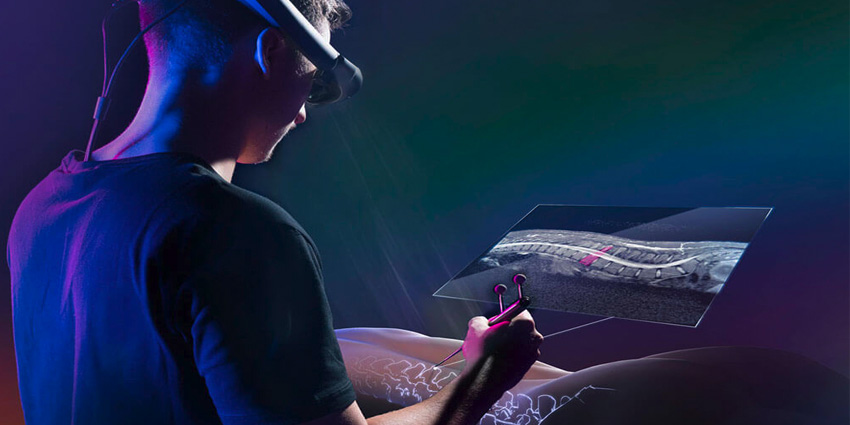The concept of using spatial computing and extended reality in the healthcare environment is one of the most exciting ones to appear in recent history. Over the last few years, we’ve seen various locations experimenting with XR for things like medical training procedures and better telehealth. Now, Brainlab and Magic Leap believe that their tools can assist clinicians in delivering better surgery solutions too.
Magic Leap and Brainlab have created Magic Leap 1 headsets equipped using the new Mixed Reality Viewer designed by Brainlab, to help medical professionals to plan surgeries, train their colleagues, and so much more. These tools can even help doctors and surgeons to better explain their diagnosis and treatment suggestions to patients.
A New Strategy to Advance Surgery
The Mixed Reality Viewer on the Magic Leap headset automatically transforms any environment into an interactive space, with 3D visualisations, and unique interactions. Thanks to built-in sensors in the hardware, the Magic Leap headset can map the room, and allow clinicians to mimic the planned surgery with 3D models and image slices throughout the space.
Whether in a meeting room, office, or at home, the system allows up to four people to interact and collaborate with each other in real time, taking opportunities for surgical development to the next level.
According to the MD director and professor, Viet Braun of the Jung-Stilling Hospital, his team has discovered that it can significantly reduce the risk of surgical issues for virtually any case with support from the Magic Leap 1 and Mixed Reality Viewer during planning. With these tools, the hospital sees fewer distinct complications than they encountered before, and surgical times are reduced, along with the amount of time a patient spends under anesthesia.
Incredible Opportunities for the Future
Surgical planning is just one example of an area where spatial computing can become a significant component for viewing and interacting with data and patient imaging opportunities. Clinicians are beginning to identify more significant value in time savings and surgical precision benefits that come from tools like the Mixed Reality Viewer on Magic Leap 1 too. The technology is already in use on a daily basis throughout Europe for multiple treatments, including aneurysms.
Around the world, surgeons are beginning to actively incorporate the Mixed Reality Viewer form Brainlab and the Magic Leap 1 into their clinical strategies for cervical fractures and other procedures that require detailed planning too. It’s clear that a paradigm shift is happening from a technology perspective that will impact the future of healthcare significantly.
Since spatial computing technology and XR solutions are still continuing to evolve and adapt, there’s no doubt that they’ll continue to play a role in the surgeries of the future. Adding these visual tools into the current surgical workflow is a fantastic step for groups keen to upgrade their environment in the months and years ahead.







